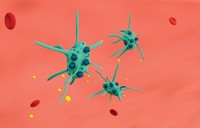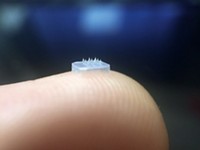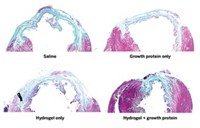Advertisement
Grab your lab coat. Let's get started
Welcome!
Welcome!
Create an account below to get 6 C&EN articles per month, receive newsletters and more - all free.
It seems this is your first time logging in online. Please enter the following information to continue.
As an ACS member you automatically get access to this site. All we need is few more details to create your reading experience.
Not you? Sign in with a different account.
Not you? Sign in with a different account.
ERROR 1
ERROR 1
ERROR 2
ERROR 2
ERROR 2
ERROR 2
ERROR 2
Password and Confirm password must match.
If you have an ACS member number, please enter it here so we can link this account to your membership. (optional)
ERROR 2
ACS values your privacy. By submitting your information, you are gaining access to C&EN and subscribing to our weekly newsletter. We use the information you provide to make your reading experience better, and we will never sell your data to third party members.
Biological Chemistry
Nanoparticles Trick Malaria Parasites By Mimicking Red Blood Cells
Nanomedicine: Parasites bind to a cell-like nanoparticle instead of infecting cells
by Katherine Bourzac
December 16, 2014

Researchers have designed polymer nanoparticles to mimic the surfaces of red blood cells so that the particles bind to malaria parasites and prevent them from infecting real red blood cells (ACS Nano 2014, DOI: 10.1021/nn5054206). The nanomimics have been tried in test tubes only, but if this strategy works in the body, it could help treat the deadliest type of malaria caused by the Plasmodium falciparum parasite.
P. falciparum has a complex life cycle that makes it difficult for both the immune system to fight a malaria infection and for scientists to target the disease with drugs and vaccines. After entering the body through a mosquito bite and replicating in the liver, the parasite enters the bloodstream at a growth stage called the merozoite. Within about a minute, merozoites enter red blood cells using receptors on the cells’ surfaces. Once inside the cells, the parasites multiply. After about 48 hours, each infected cell releases more merozoites, which go on to infect more cells. This process continues, triggering waves of fever until the patient fights off the infection and recovers or else succumbs to the disease as a result of severe anemia, respiratory problems, encephalopathy, or other complications.
Researchers at the University of Basel, in Switzerland, led by chemist Wolfgang Meier, wanted to design new nanoparticles to misdirect invading merozoites. To get into blood cells, merozoites first bind to heparan sulfate, a polysaccharide on the cells’ surfaces. The blood-thinning drug heparin has a similar chemical structure to the sugar polymer and can attract merozoites. But heparin doesn’t circulate long enough in the bloodstream to be effective, and giving an anticoagulant to patients in a fragile state could be dangerous.
So Meier’s group decided to put the drug on a nanoparticle. They made a block copolymer consisting of heparin attached to a hydrophobic polymer and then mixed it in water with another block copolymer that tends to form hollow spheres called polymerosomes. The resulting particles covered with heparin mimic the surface chemistry of a red blood cell membrane.
The researchers tested these nanomimics with merozoites in a culture dish. The parasites bound to the heparin on the nanomimics and got coated with the spheres. The nanomimic particles were more than 100 times more effective at binding merozoites than free heparin. The team also placed the nanomimics in a culture dish containing healthy and infected red blood cells. When merozoites escaped the infected cells, they were covered by the nanoparticles and didn’t infect the healthy cells.
This antimalarial strategy could avoid the problem of resistance faced by many drugs for the disease, says Adrian Najer, a graduate student in Meier’s lab. It would be difficult for Plasmodium to evolve to attack red blood cells through a different cell-surface receptor. The Basel researchers also hope this therapy could act as a vaccine. Since merozoites typically circulate for less than a minute before reinfecting cells, the immune system doesn’t have much time to encounter and attack the invaders. But immune cells might have enough time to get a good look at the blocked merozoites and learn to attack them.
Liangfang Zhang, a bioengineer at the University of California, San Diego, has tested another nanoparticle cell-mimic in animals and is translating his work to the clinic. He says the Basel strategy will have to go through extensive testing, but it also shows promise for clinical translation. One thing the researchers must test is whether blood proteins end up binding to and blocking the surfaces, he says. Najer says the Basel group will start tests in animals in January.





Join the conversation
Contact the reporter
Submit a Letter to the Editor for publication
Engage with us on Twitter